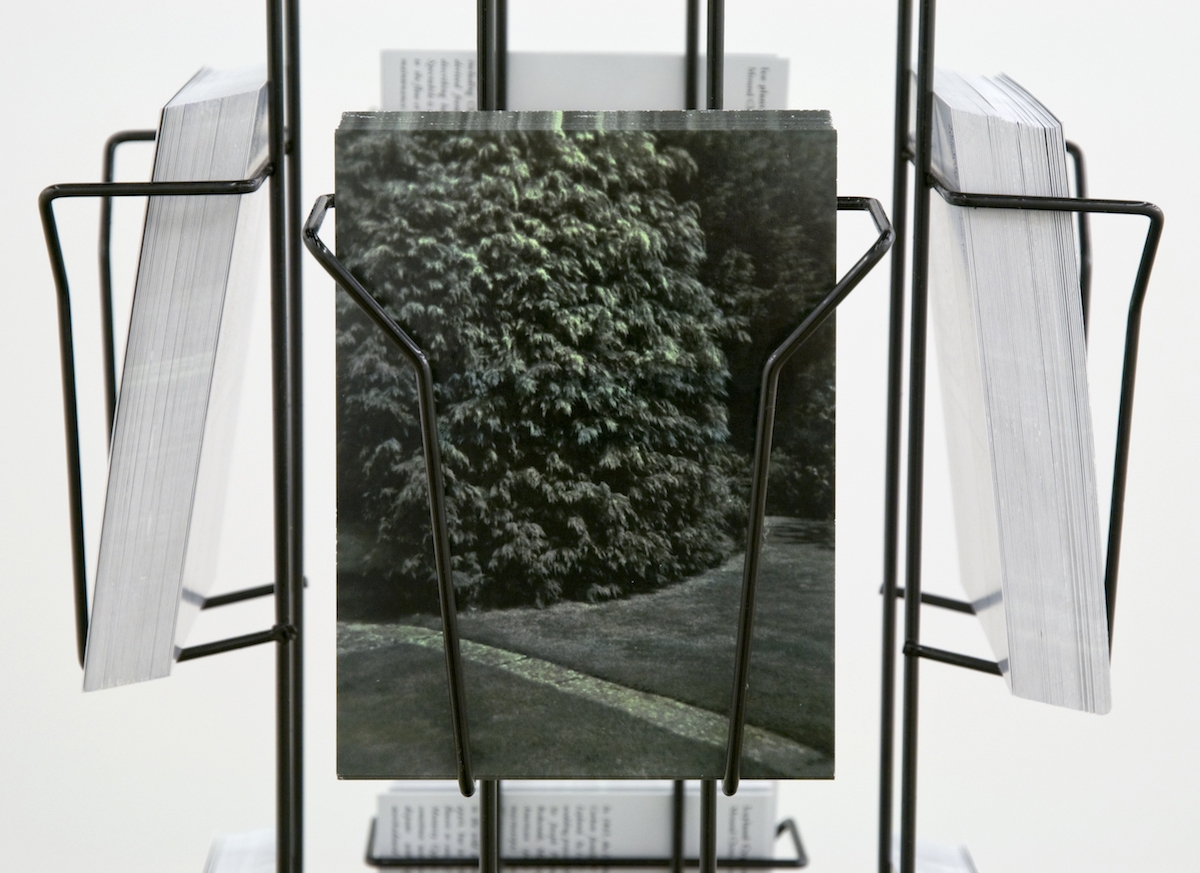Smallish, well-crafted geometric objects, concealing their interiors and evasive of your attention. Greyscale images of such things. Objects often booklike and, because of the chatter of literary allusion their maker surrounds them with, bookish. These are the staple constituents of Becky Beasley’s art. If they appear to cultivate their isolation, her sensitivity to how they form connections with one another is pitched at a level of anxiety. This connectivity is a metaphor for how meaning is created, as in the syntax of a sentence or through the networking of culture. Heightening the point, Beasley frequently uses modular structures associated with types of art – minimalist sculpture, modernist formalism – that abjure language or any form of narrative.
The most primal narrative mode, and the opposite pole of Beasley’s art, is first-person autobiography. Brocken II (2009) is a strip of planed walnut, affixed to the wall and split by hinges into sections that dangle like an arm from a torso. Its length equals the span of her father’s outstretched arms. Two forms of representation – literal and metaphorical – are conflated; that the literal (the measure) denotes, rather than merely implying, what is not present is an ironic play on twentieth-century art’s preoccupation with its formal autonomy. The subtitle quotes a text on the Austrian writer Thomas Bernhard, known for his mordant irony, and the sculpture is part of a series evoking alternative physical postures in its various configurations of the hinged modules. Beasley makes associating objects a formal dance. If her work is vulnerable to the question of whether its parts are too much less than the narrative of their sum, it also poses that question itself.
Autobiographical artworks have begun – in her recent shows – to plot an autobiographical narrative. Narrative challenges formalism, as the series, the multiple or the parts of an oeuvre breach the frame and point to the collective condition of installation, which is also where space meets the ambulatory viewer’s time. Beasley makes the ‘postures’ assumed by her objects echo our movements, as if the work were turning the tables on us. Rotating from the ceiling one cycle per minute is a cast of a branch blown from a tree in a 2014 storm (Bearings (IV), 2014). It is both a clock’s second hand and a mystical diviner, seeking, perhaps, the past it connotes, the gallery it spans or the original branch, absent found object to its present cast. Angled like a fishing rod or erect phallus, it signifies desire; and desire is duly recorded in a pair of posters, at once notices of her past exhibitions and textual fragments, in which Beasley addresses her partner while recalling the beginnings of their relationship. The posters connect notice to narrative, but a dotted line divides them, as if despite their proximity Beasley’s private self may have to be torn away from her artistic persona, as one kind of language that does not belong with the other.
The branch suggests that time be apprehended spatially and space temporally. Its rotation becomes that of a revolving postcard rack (Flora, A Life, 2013), or several works that picture landscape from different angles, or at different times. Manhattan Island is mapped at 3am and 3pm, its gridded greys corresponding to density of population (Oscillating City, 2016), while three colour photographs show the garden of a house in Kingston-upon-Thames where Eadweard Muybridge spent his last years, in whose grounds he is rumoured to have dug ponds to create a scale model of the American Great Lakes. Beasley has photographed the outdoor pool from three angles: an analogy for Muybridge’s 360-degree photographic record of San Francisco in 1878.
Muybridge’s imaginative leap across the Atlantic corresponds to the gulf Beasley bridges, in the gallery, between the cerulean of his pool and the cyan of the parallel lines she has stained into sheets of old bed linen using a cyanotype process (Spring Equinox, Morning (Floorboards), 2017). The lines suggest their own geographical and imaginative crossing; both the here-and-now of the formalist present and a causal trace of the winter light in Beasley’s Sussex studio, which ‘exposed’ their cyanide solution and made it blue.
Becky Beasley: Depressive Alcoholic Mother at Galeria Plan B, Berlin through 9 June
From the Summer 2018 issue of ArtReview
